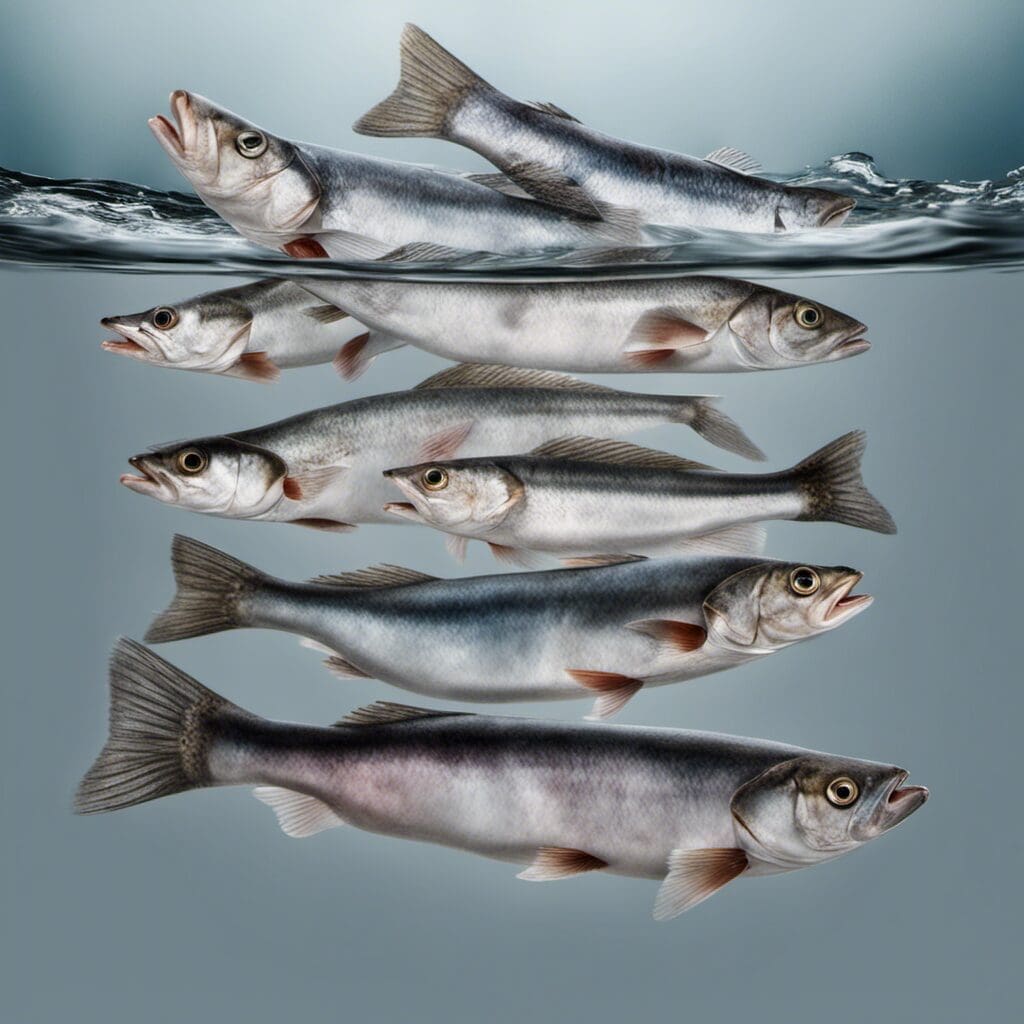Introduction
The Atlantic Herring (Clupea harengus) belongs to the Clupeidae family that’s renowned for its importance in global seafood trade.
Conservation Status
Considering its abundant presence, the Atlantic Herring has been listed as ‘Least Concern’ by the International Union for Conservation of Nature (IUCN). Conservation efforts include regulatory fishing measures and monitoring of spawning populations.
Statistics
| Attribute | Average | Range |
|---|---|---|
| Length | 30 cm | 20 cm – 45 cm |
| Weight | 0.8 kg | 0.5 kg – 1.5 kg |
| Lifespan | 15 years | N/A |
Distribution
The Atlantic Herring is widely distributed, spanning the East coast of North America to the waters surrounding Iceland and Scandinavia, in oceans and seas. They undergo regular migrations, moving to rural waters for spawning and retreating offshore during the winter.
Habitats
Atlantic herring are typically found in marine water but also frequent brackish environments. They dwell at depths ranging from the surface to 200 meters, in temperatures between 2°C and 26°C.
When and Where to See
Atlantic Herring are widely visible throughout the year. However, they are particularly abundant from spring through autumn. The best time to observe is generally at dawn or dusk.
Best Fishing Locations
Known for their widespread distribution, Atlantic Herrings can be encountered in:
- Atlantic Northeast
- Massachusetts Bay
- Gulf of Maine
- Canadian Maritimes
- North Sea
- Baltic Sea
- Norwegian Sea
- Iceland
How to Catch
Popular baits for Atlantic Herring fishing include small jigs, spoons, and sabiki rigs. Methods typically involve trolling or bottom fishing. Fishing success is usually highest during the early morning or late afternoon.
Identification Guide
Atlantic Herrings are defined by their silver-blue: color, sleek torpedo-shaped bodies, and distinctive single dorsal fin. They have a protruding lower jaw and large, round eyes.
Culinary Information
Atlantic Herring is appreciated for its mild, sweet taste and firm texture. It is rich in Omega-3 fatty acids, protein, and vitamins B12 and D. Pickled herring and herring salad are traditional dishes in many countries around the Baltic and North Sea.
Additional Information
Atlantic Herrings are filter feeders, sieving planktonic organisms from the water. They form large schools and coordinate their movements in spectacular displays, possibly as a protection mechanism against predators like sea birds, marine mammals, and larger fish species.
References and Further Reading
- FishBase: Atlantic Herring
- IUCN Red List – Atlantic Herring

